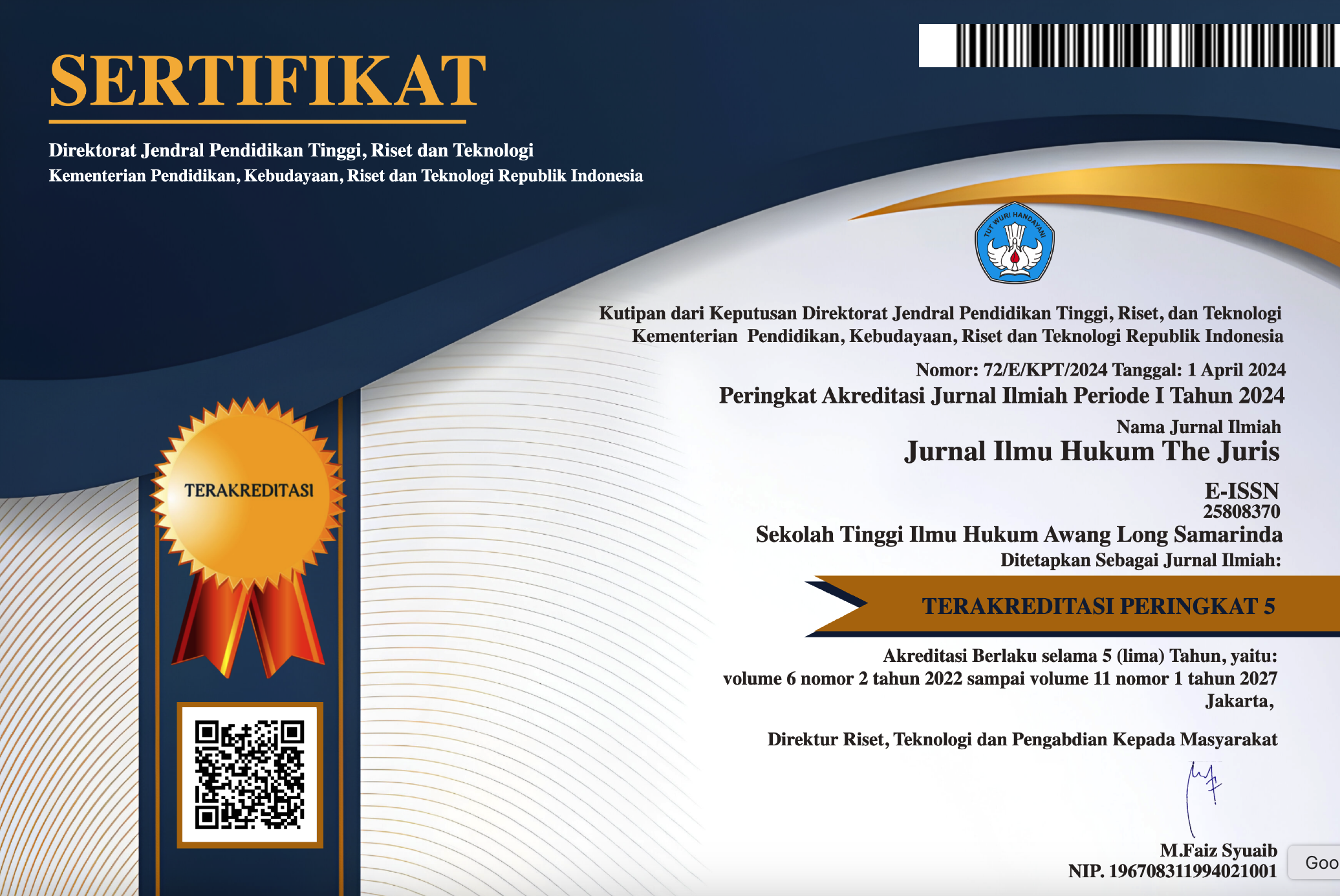PEMBUATAN BERITA ACARA RAPAT UMUM PEMEGANG SAHAM YANG MEMUAT TANDA TANGAN PALSU OLEH NOTARIS (Studi Kasus Putusan Nomor 148/Pid.B/2019/PN Gin)
Abstract
A negligent notary will cause problems that can cause legal defects in the notary deed and cause a lawsuit on the notary. there is an omission of a notary because the notary does not pay attention in the principle of prudence therefore the Notary in the process of making an authentic deed so that in practice there are often problems that often arise due to the crimes of the parties such as falsifying identity, fake signatures, fake receipts, false certificates and fake letters that cause legal defects in the notary deed and result in criminal and civil law loopholes for the notary, Even in practice, there are often notaries called both as witnesses and even as suspects because of their problematic deeds. This research method uses Normative Juridical. The problem in this study is how to compensate for losses due to actions that have been done by notaries based on decision No. 148 / Pid.B / 2019 / PN. Gin? and Why the judge's consideration in the decision Number 148 / Pid.B / 2019 / PN. Gin stated that a Notary who is proven to falsify signatures is not a criminal offense? The conclusion of this study is because the incorrect signature is to imitate the signature of others, whether with his consent or not. Notaries are faced with a loss where obtaining letters and information by the parties is false then it can harm a notary who has carried out his duties in good faith is even considered to participate because the parties provide false statements into the authentic notary deed.
Downloads
Copyright (c) 2022 STIH Awang Long

This work is licensed under a Creative Commons Attribution-ShareAlike 4.0 International License.







